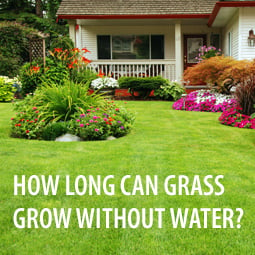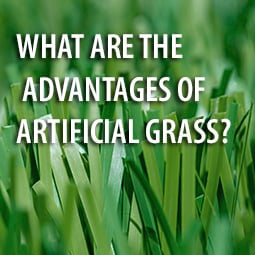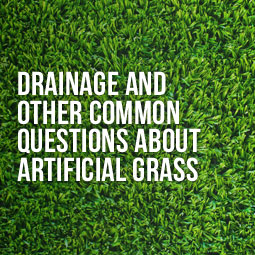 Homeowners who still have natural grass lawns worry that severe drought is always lurking. Mother Nature is unreliable, and the cost of water is skyrocketing. To further motivate us to conserve water, the State of California recently increased usage restrictions. Again. It’s hard to blame them, when you know that a residential lawn of just 700-1,000 square feet can use up to 56,000 gallons of water each year.
Homeowners who still have natural grass lawns worry that severe drought is always lurking. Mother Nature is unreliable, and the cost of water is skyrocketing. To further motivate us to conserve water, the State of California recently increased usage restrictions. Again. It’s hard to blame them, when you know that a residential lawn of just 700-1,000 square feet can use up to 56,000 gallons of water each year.
To help you visualize that amount of water, it's twice the size of the average home swimming pool.
The Root System
Growing grass must have a well-established root system to absorb water and nutrients from the soil. Each species of grass has a root system that works well for its particular needs. Grasses that are successful in drier regions have roots that extend deep into the ground, where they’re more likely to find moisture. Where water is plentiful, roots are shallow. How long the grass go without water depends on the root system’s efficiency.
The Soil
Different types of soil hold water in varying amounts. Black soil that is rich in humus can hold an abundance of water. Clay, on the other hand, is a big loser. While some moisture may soak into the ground after a rain or watering, most of it remain close to the surface and simply evaporates.
Drought Conditions
Kentucky bluegrass and buffalo grass are two varieties that do well in moderate drought-like conditions. Although they may still need water, they have exceptionally efficient root systems that can find water no matter how far down they have to go. During drought conditions, that may be several inches.
As rainfall levels begin to drop and temperatures become cooler, grass will enter a dormant phase. This is the plant kingdom’s version of hibernation. When grass goes dormant, it partially shuts down. The grass will turn yellow or brown and look as if it has died. The blades may actually die away, but the stems and roots remain alive. With less plant to feed, they can thrive off minimal moisture. Even during the winter months, while the grass looks dry and brittle, the root system is still seeking water.
Artificial Grass Never Needs Water
It doesn’t grow, so it doesn’t care what kind of soil you have. With professional installation, artificial grass has a permanently efficient “root” system that drains water quickly if it does rain but is just as happy if it never rains again. Downfall or drought, fake grass always looks and feels lush and healthy.
Furthermore, artificial grass never needs much of anything. No mowing and all that other stuff homeowners go through attempting to inspire their natural grass lawns to grow and green up and fend off bugs and disease. Lawn care is expensive, even if you discount the cost of water. It’s also tedious and time-consuming. Instead of giving yourself an ulcer worrying about whether it will rain or if you’ll be able to afford the water bill, you could be doing something fun with all the money and time you’ll save.
What a lovely thought.
Waterless grass. It’s truly the lawn of the future, as so many homeowners can attest. So why are you still waiting to invest in a better-looking, better-performing, sustainable lawn? It’s time for a change! No need to stall around till spring, either, because our experienced Heavenly Greens team can plant artificial grass in any season. Give us a call, and we’ll help you get to the root of the matter.











